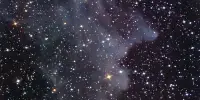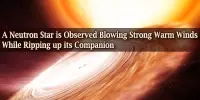Death and taxes may be constants for people, but gravity and collisions are constants for planets. The latter is what Brandon Johnson investigates, and he makes use of impact data to comprehend the origins and make-up of planets, moons, asteroids, and meteorites throughout the solar system.
“Impact cratering is the most ubiquitous surface process shaping planetary bodies,” Johnson said.
“Craters are found on almost every solid body we’ve ever seen. They are a major driver of change in planetary bodies. They drive the evolution of planetary crusts. All the planets and asteroids were built from a series of impacts. Studying impacts can help us determine the composition and structure of planets.”
The universe is full of planetary systems with planets orbiting hosts stars, much like our own. Because our Sun is called Sol after the Latin word for Sun, “solis,” and because anything connected to the Sun is referred to as “solar,” our planetary system is called the “solar system.”
Johnson has examined practically all of the major planetary bodies in the solar system in his role as an associate professor in the Department of Earth, Atmospheric, and Planetary Sciences at Purdue University.
Additionally, the temporal span of his research spans from relatively recent effects to almost the solar system’s origin. Johnson gains significant insights into how and when bodies develop by gathering information on collisions that may be used to rebuild the environment in which the collisions took place.
Through the use of merely physics, arithmetic, and a computer, his research is enabling people to explore the solar system’s planetary bodies. There is never a shortage of fresh information or research topics thanks to laboratory studies and space flights.
Impact cratering is the most ubiquitous surface process shaping planetary bodies. Craters are found on almost every solid-body we’ve ever seen. They are a major driver of change in planetary bodies. They drive the evolution of planetary crusts. All the planets and asteroids were built from a series of impacts. Studying impacts can help us determine the composition and structure of planets.
Brandon Johnson
“Most meteorites contain chondrules small, previously molten, particles,” Johnson said.
“Essentially, by studying the formation of chondrules by impacts, we can better understand what was going on in the nascent solar system. For example, based on one impact, we were able to determine that Jupiter had already formed right around 5 million years after the first solar system solids, changing the timeline of our understanding of the solar system.”
The Sun, our star, and everything gravitationally attached to it, including the moons Mercury, Venus, Earth, Mars, Jupiter, Saturn, Uranus, and Neptune, are what make up our solar system. There are also dozens of moons, as well as millions of asteroids, comets, and meteoroids. We have found thousands of planetary systems orbiting other stars in the Milky Way in addition to our own solar system.
Complex computer models are created by Johnson and his lab colleagues using known information about the physics and composition of planetary bodies. The models are then put through a variety of situations, and the results are compared to actual events.
Scientists can learn more about the make-up of asteroids and meteorites by analyzing their movements and impacts. This information can help them comprehend how substances like metal and water are spread throughout the solar system.
His team can learn more about the innards of these bodies, such as whether they have liquid seas or molten cores, by examining the impact craters and basins on locations like Pluto, Venus, and icy moons, as well as the mechanics of other processes occurring on Europa and asteroids like Psyche.
His creative output goes beyond the solar system. He also analyzes impacts that occurred closer to Earth, such as those on the planet’s moon and terrestrial impacts that might have had an impact on the evolution of the planet’s crust, atmosphere, and biosphere.
Anyone can research the impacts of various rocks into the Earth using an online impact calculator tool created by Johnson’s mentor and former Distinguished Professor of Earth, Atmospheric, and Planetary Sciences, the late Jay Melosh. For a new generation of planetary students, Johnson and his team are redesigning the instrument.















